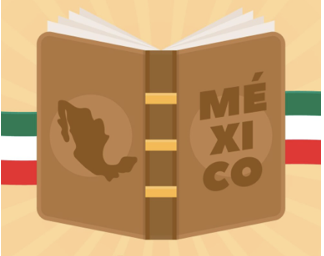The juicio de amparo is one of the most important legal mechanisms in Mexico, and in 2025 it remains the main tool for protecting human rights in Mexico against acts of authority that violate individual guarantees.This comprehensive guide explains what it is, how it works, the different types of amparo, their costs, the amparo procedure, and the importance of seeking legal advice in amparo proceedings.
History of the Juicio de Amparo in Mexico
The juicio de amparo has deep historical roots dating back to the 19th century. It was formally introduced in the Yucatán Constitution of 1841, thanks to the work of jurists Manuel Crescencio Rejón and Mariano Otero, who designed this legal mechanism to protect citizens from abuses of authority.
Since then, the amparo has evolved into a key piece of Mexico’s legal system, enshrined in Articles 1, 103, and 107 of the Political Constitution of the United Mexican States, as well as in the Amparo Law, which regulates its procedure.

What Is the Juicio de Amparo?
The juicio de amparo, or constitutional relief, is a legal mechanism that protects any person against laws, acts, or omissions by authorities that violate human rights in Mexico.In simple terms, if a governmental authority oversteps its powers or violates your fundamental rights, you may file for amparo to reverse the act and restore your legal protection.

Impact of the Juicio de Amparo on Mexican Society
Throughout history, the juicio de amparo has played a decisive role in defending human rights in Mexico. It has overturned arbitrary actions, stopped unconstitutional laws, and brought justice in landmark cases — such as the Amparo Review 100/2018, related to the “Internal Security Law.”
This constitutional instrument reinforces the principle that no authority is above the law, strengthening citizens’ trust in the judicial system and promoting a culture of constitutional respect.
Types of Amparo in Mexico
The juicio de amparo is mainly divided into two types: direct amparo and indirect amparo. Each serves different purposes depending on the nature of the rights violation.
Direct Amparo
Filed against final court judgments that no longer allow appeals.
📌 Example: A worker who lost a labor lawsuit and claims constitutional rights violations during the process.
Indirect Amparo
Filed against acts committed by authorities outside of or during a proceeding.📌 Example: Unlawful detention, asset seizure without a warrant, or the enforcement of an unconstitutional law.
Understanding the various types of amparo helps citizens choose the proper legal avenue for their specific situation.

Differences Between Amparo and Other Legal Remedies
While similar to other human rights protection mechanisms, the amparo has broader scope.For example:
- The human rights protection trial addresses only individual violations, while amparo can challenge both judicial and administrative acts.
- Administrative appeals are decided by the same authority that issued the act, whereas the amparo is reviewed by a federal judge, guaranteeing impartiality.
Who Can File for an Amparo?
Any individual or legal entity may file a juicio de amparo when they believe a law or authority’s action affects their human rights in Mexico.This includes:
- Victims of unconstitutional laws.
- Those affected by arbitrary acts of authority.
- Cases of omission that endanger life, property, or liberty.
Collective amparo actions and filings by third parties are also possible under current legislation.
Requirements for Filing a Juicio de Amparo
To begin the process, the petitioner must provide:
- Name and signature of the complainant.
- Description of the act being challenged.
- Identification of the responsible authority.
- Evidence supporting the claim.
- Filing of the petition within 15 business days (except in urgent cases such as detention).

Amparo Procedure: Step by Step
- Identify the act or omission that violates your rights.
- Gather documents and evidence to support your claim.
- Draft the amparo petition (with legal or free advisory support).
- Submit the case to the corresponding District Court.
- Request a provisional or definitive suspension of the act in question.
- Wait for the court’s ruling, where the amparo will be granted or denied.
Costs of a Juicio de Amparo in Mexico (2025)
Amparo costs vary depending on the case’s complexity and the legal representation chosen:
- Public defense services: Free of charge for individuals with limited resources.
- Private attorney: Typically between 15,000 and 50,000 MXN, depending on case complexity.
- Additional expenses: Certified copies, court filings, notifications, and other administrative costs.
In some cases, individuals may access free legal assistance in amparo proceedings, often through universities or legal aid organizations.
Legal Advice in Amparo Cases
Having qualified legal advice in amparo proceedings is essential to achieving success.
A specialized lawyer can identify the correct type of amparo, draft proper constitutional arguments, and ensure all deadlines and requirements are met.
Professional guidance often determines whether an amparo succeeds or fails.
Consequences of the Juicio de Amparo
The outcome of a juicio de amparo can have several effects:
- If the amparo is granted, the authority must reverse the challenged act and restore the complainant’s rights.
- If it is denied, the petitioner may file a further review appeal before collegiate courts.
- In significant cases, the ruling may set binding jurisprudence that guides future court decisions.
Case Studies
- Unjustly Dismissed Worker: May file a direct amparo after losing a labor lawsuit if constitutional labor rights were violated.
- Citizen Arbitrarily Detained: May submit an indirect amparo to suspend the unlawful detention and seek immediate release.
- Parent Ensuring the Right to Education: May promote an amparo if a public authority denies their child access to education.
Legal References
- Political Constitution of the United Mexican States, Articles 1, 103, and 107.
- Amparo Law, officially published in the Diario Oficial de la Federación, regulating the types of amparo and its procedure.
- Jurisprudence of the Supreme Court of Justice of the Nation, including landmark rulings such as the Internal Security Law and Amparo Review 100/2018.
Conclusion

The juicio de amparo is the backbone of Mexico’s judicial system — a legal instrument that safeguards human rights in Mexico and limits abuses of authority.At abogadomex.mx, we recommend seeking specialized legal advice in amparo matters to ensure that every claim is filed properly and on time.
📖 Official Source: Supreme Court of Justice of the Nation – Juicio de Amparo
